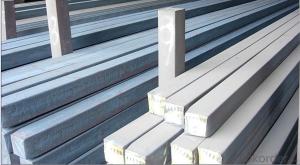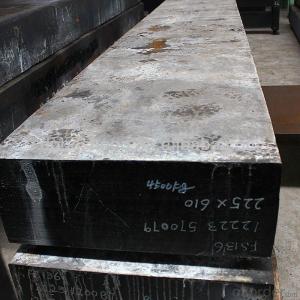Square Steel Billet Q235 Grade Prime Quality 7#
- Loading Port:
- Tianjin
- Payment Terms:
- TT OR LC
- Min Order Qty:
- 2000 m.t
- Supply Capability:
- 50000 m.t/month
OKorder Service Pledge
OKorder Financial Service
You Might Also Like
Description of Square Steel Billet Q235 Grade Prime Quality 7#
M. S. Billets are used for rolling of TMT Re-Bars of Fe415 and Fe500 Grade and various other structural steel products.
CRS Billets are used for rolling of CRS TMT Re-Bars.
Special Alloy Billets are used for rolling of any special grade TMT Re-Bars like Earthquake resistant TMT Re-Bars and for special grade structural steel products.
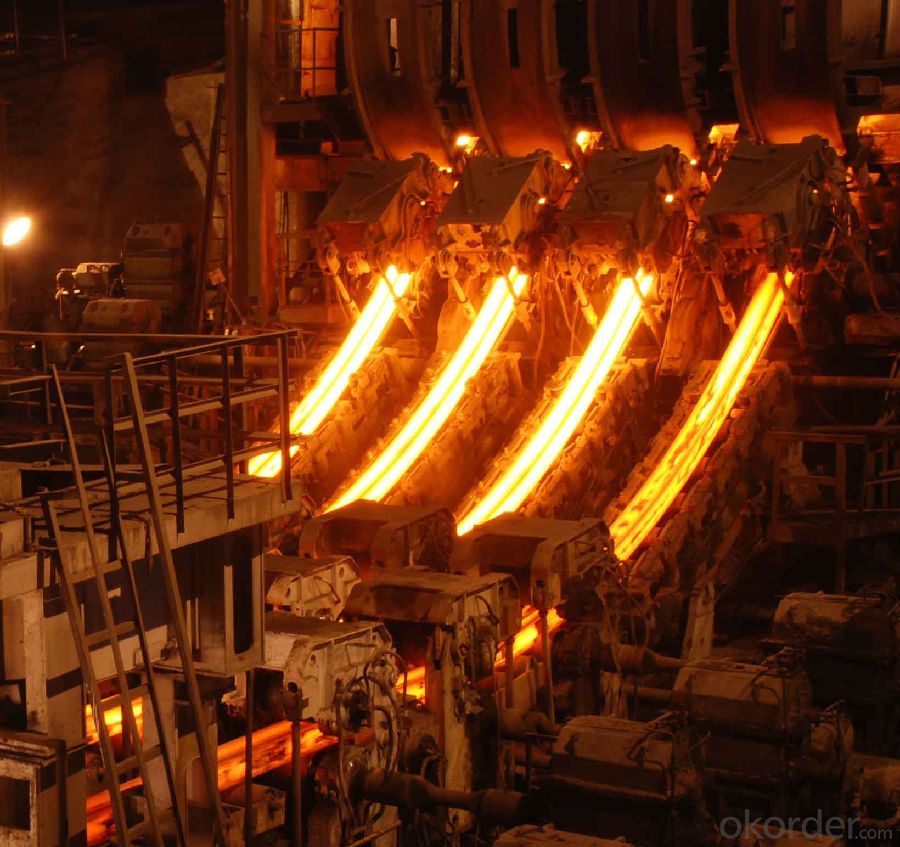
Main Feature Square Steel Billet Q235 Grade Prime Quality 7#
Raw elements(C,Fe,Ni,Mn,Cr,Cu.)---Smelted ingots by AOD finery---hot rolled into black suface---pickling in acid liquid---cold drawn----polished by automatically machine--- cutting into pieces---checking quanlity
Applications of Square Steel Billet Q235 Grade Prime Quality 7#
Widely Used in the areas such as Stainless Steel Fasteners, Chains, Kitchen and Sanitary wares, Furniture handles, Handrails, Electroplating and Electrolyzing pendants, Foods, Electron, Petroleum, Construction and Decoration, etc. Products have a high strength after cold-working. Electronic products parts, Medical appliance, Springs, Bus Inside and Outside packaging and building, Street Lamp Posts, etc. Decoration materials and Outdoor Publicity Billboard. Used for the products which have the Anti-Stress Corrosion requirement. Electron Products, Table-wares, Bolts, Nuts, Screen Meshes, Cumbustors and so on.
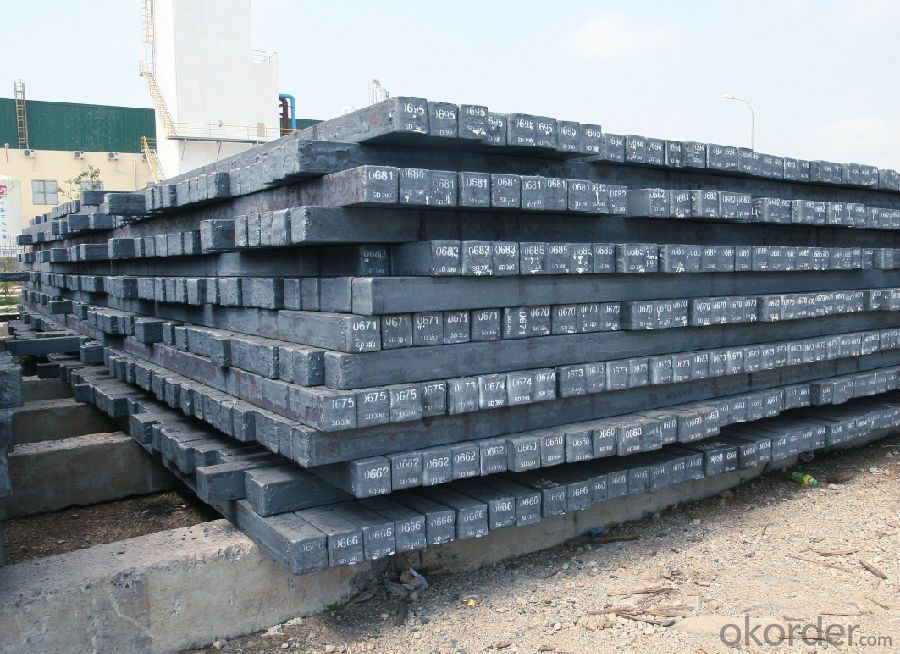
Specifications of Square Steel Billet Q235 Grade Prime Quality 7#
| Standard | C(%) | Mn(%) | S(%) | P(%) | Si(%) |
| Q195 | ≤0.12 | ≤0.50 | ≤0.040 | ≤0.035 | ≤0.30 |
| Q235 | ≤0.20 | ≤1.40 | ≤0.045 | ≤0.045 | ≤0.35 |
| Q275 | ≤0.22 | ≤1.50 | ≤0.045 | ≤0.045 | ≤0.35 |
| 20MnSi | 0.17-0.25 | 1.2-1.6 | ≤ 0.050 | ≤ 0.050 | 0.40-0.80 |
| 3SP | 0.14-0.22 | 0.40-0.85 | ≤ 0.050 | ≤ 0.040 | 0.05-0.15 |
| 5SP | 0.28-0.37 | 0.50-1.00 | ≤ 0.050 | ≤ 0.040 | 0.15-0.30 |
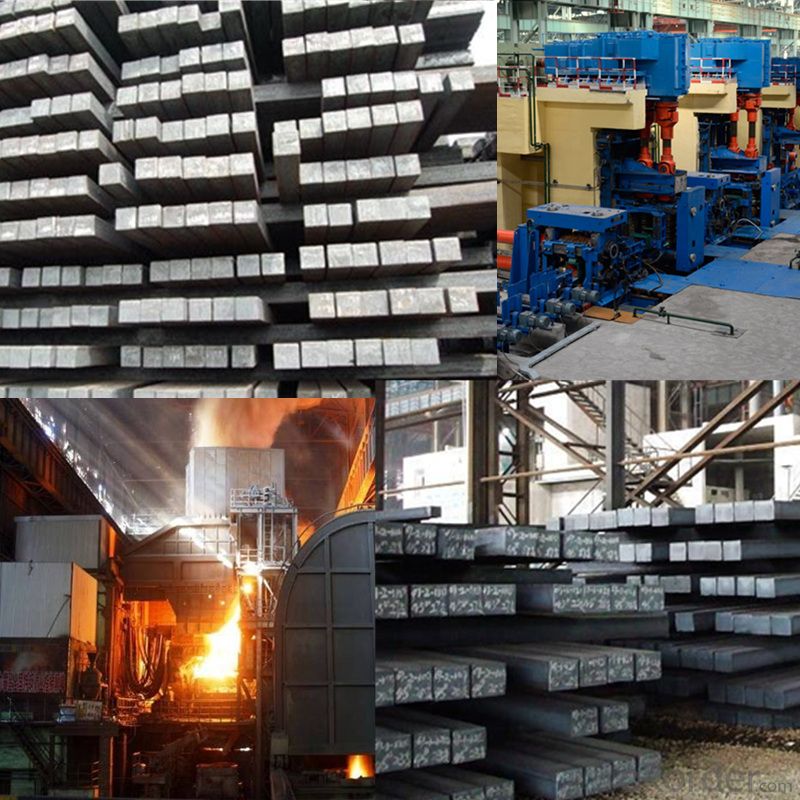
FAQ of Square Steel Billet Q235 Grade Prime Quality 7#
We have organized several common questions for our clients,may help you sincerely:
1. How Can I Visit There?
Our company is located in Tianjin City, China, near Beijing. You can fly to Tianjin Airport Directly. All our clients, from home or aboard, are warmly welcome to visit us!
2. How Can I Get Some Sample?
We are honored to offer you sample.
3. Why choose CNBM?
Our delivery time about 15-20days for standard sizes, if you have other requirements like hardness, quanity and width ,it is about 20-40days. But don't worry we also try our best for the delivery time ,because time longer and our cost is higher.
- Q:What are the different quality standards for steel billets?
- There are several quality standards for steel billets, including ASTM (American Society for Testing and Materials), ISO (International Organization for Standardization), and EN (European Norm) standards. These standards define various parameters such as chemical composition, mechanical properties, and dimensional tolerances that steel billets must meet in order to ensure their quality and suitability for different applications.
- Q:What are the different types of steel billet casting methods?
- There are several different methods used for steel billet casting, each with its own advantages and applications. The most commonly used methods include continuous casting, static casting, and centrifugal casting. 1. Continuous Casting: This is the most widely used method for steel billet casting. In this process, molten steel is poured into a water-cooled mold, where it solidifies into a continuous strand. The strand is then cut into desired lengths by a cutting machine. Continuous casting allows for high production rates and consistent quality, making it ideal for mass production of steel billets. 2. Static Casting: Also known as ingot casting, this method involves pouring molten steel into a stationary mold, where it solidifies into a solid billet. The mold is typically made of sand or metal, and the solidification process can be controlled to obtain desired properties. Static casting is often used for smaller production runs or when specific alloy compositions or shapes are required. 3. Centrifugal Casting: This method utilizes centrifugal force to distribute molten steel evenly within a rotating mold. As the mold spins, the molten steel is pushed towards the mold walls, resulting in a uniform casting with improved density and mechanical properties. Centrifugal casting is commonly used for large and complex billets, such as those used in pipe manufacturing or turbine components. These are the main methods used for steel billet casting; however, there may be variations or combinations of these methods depending on specific requirements or technological advancements.
- Q:How are steel billets used in the manufacturing of pressure vessel components?
- Steel billets are a crucial raw material in the manufacturing process of pressure vessel components. Pressure vessels are containers designed to hold gases or liquids at a significantly higher or lower pressure than the surrounding environment. These components are widely used in various industries such as oil and gas, chemical, and power generation. Steel billets, which are semi-finished products with a square or round cross-section, serve as the starting point for the production of pressure vessel components. They are typically made from carbon or alloy steel and undergo several manufacturing processes to transform them into the final product. The first step in the manufacturing process involves heating the steel billets to a specific temperature to make them more malleable. This process is known as hot working or forging. The heated billets are then subjected to pressure, either through hammering or rolling, to shape them into the desired form. This process helps to refine the structure of the steel and improve its mechanical properties. After the initial shaping process, the billets are further processed through a series of machining operations. This includes cutting, drilling, and milling to create the necessary features and dimensions required for pressure vessel components such as shells, heads, nozzles, and flanges. These machining operations ensure that the components meet the precise specifications and tolerances required for safe and efficient operation. Additionally, the steel billets may undergo heat treatment processes such as annealing, quenching, and tempering to further enhance their mechanical properties. Heat treatment helps to improve the strength, hardness, and durability of the steel, making it suitable for withstanding high pressures and corrosive environments. Once the pressure vessel components are machined and heat-treated, they undergo rigorous quality control inspections to ensure they meet the required standards and specifications. This includes non-destructive testing methods such as ultrasonic testing, radiographic testing, and liquid penetrant testing to detect any potential defects or flaws. In summary, steel billets play a crucial role in the manufacturing of pressure vessel components. They are transformed through hot working, machining, and heat treatment processes to create the final products. By using high-quality steel billets and employing stringent quality control measures, manufacturers can produce pressure vessel components that are safe, reliable, and capable of withstanding the demanding conditions they are designed for.
- Q:If the casting speed is not steady, what will happen to the billet?
- The instability of the casting speed leads to the unstable surface of the mould and increases the probability of slag entrapment in the mold.
- Q:What is Alfa carbon? What is beta carbon?
- Alfa is directly connected with the functional groups of carbon atoms of carbon atoms, such as CH3CH2COOH CH2 in which methylene propionate is Alfa carbon carbon carbon atom is the beta carbon atom is directly connected with the functional groups and the connection of the carbon (around Kazakhstan), such as the CH3CH2COOH CH3 propionic acid methyl carbon is the beta carbon
- Q:How are steel billets rolled into shape?
- Steel billets are rolled into shape by passing them through a series of rolling mills, where they are subjected to high pressure and temperature. The billets are first heated to a specific temperature to make them more malleable. They are then continuously passed through multiple sets of rollers, which gradually decrease the thickness and increase the length of the billet. This process, known as hot rolling, helps shape the steel billets into various forms such as bars, rods, or sheets.
- Q:How are steel billets shaped into other forms?
- A process known as hot rolling is used to transform steel billets into different forms. This process involves feeding the steel billet through heated rollers, which compress and mold it into the desired shape. To begin, the steel billet is heated to a high temperature in a furnace. This heat treatment makes the steel more malleable and easier to shape. Once the billet has reached the desired temperature, it is then sent into a rolling mill. Within the rolling mill, the billet undergoes a series of passes through rollers that apply pressure and force to shape the steel. These rollers come in various shapes and sizes depending on the desired outcome. As the billet passes through the rollers, it gradually takes on the desired form, such as sheets, bars, or beams. The rolling process not only shapes the steel but also improves its mechanical properties. It refines the grain structure, enhances strength and toughness, and eliminates any internal defects. This makes the steel more suitable for a range of applications, including construction, automotive, and machinery. Following the hot rolling process, the steel often undergoes additional processing through cold rolling. This involves passing the steel through cold rollers to further refine its surface finish and dimensions. Additionally, secondary operations like cutting, bending, and welding may be carried out to further shape the steel into the desired end product. In conclusion, hot rolling plays a vital role in transforming steel billets into various forms. It enables the production of a wide range of steel products, each with its own unique shape, size, and mechanical properties. This helps meet the diverse needs of industries worldwide.
- Q:What are the different types of heat treatment processes used for steel billets?
- There are several different types of heat treatment processes used for steel billets. Some commonly used methods include annealing, normalizing, quenching and tempering, and case hardening. Each process has its own purpose and is used to achieve specific properties in the steel billets.
- Q:What are the main factors affecting the formability of alloy steel billets?
- The formability of alloy steel billets, which refers to the ability of the material to be shaped or formed without cracking or fracturing, is influenced by several key factors. 1. Alloy composition: The alloy composition of steel billets plays a significant role in determining their formability. Different alloying elements such as carbon, manganese, chromium, and nickel can alter the mechanical properties of the steel, including its ductility and toughness. Higher levels of certain elements can improve formability, while excessive amounts can lead to brittleness and reduced formability. 2. Grain size and structure: The grain size and structure of the steel billets also affect formability. Fine-grained structures have better formability compared to coarser grain sizes. This is because fine grains allow for more uniform deformation and reduce the likelihood of localized strain concentration, which can lead to cracking. 3. Temperature: The temperature at which the steel billets are processed greatly influences their formability. The material's ductility and ability to deform without cracking are generally enhanced at higher temperatures. This is due to the reduction in the material's yield strength and increased plasticity. However, excessively high temperatures can also lead to excessive grain growth and decreased formability. 4. Strain rate: The rate at which the steel billets are deformed is another important factor. Higher strain rates can result in reduced formability, as the material may not have sufficient time to accommodate the deformation before fracture occurs. Controlling the strain rate during forming processes is crucial to ensure optimal formability. 5. Lubrication: The use of lubricants during the forming process can significantly improve the formability of steel billets. Lubricants reduce friction between the material and the forming tools, minimizing the risk of sticking or tearing. They also help dissipate heat generated during deformation, preventing excessive temperature rise that can negatively impact formability. 6. Forming process: The specific method used to shape the steel billets can also affect formability. Different processes, such as forging, rolling, or extrusion, impose varying levels of strain and stress on the material. Each process has its own limitations and requirements for optimal formability, and selecting the appropriate forming method is crucial to achieve the desired shape without compromising the material's integrity. In summary, the formability of alloy steel billets is influenced by their alloy composition, grain size and structure, temperature, strain rate, lubrication, and the chosen forming process. Understanding and controlling these factors are essential for achieving the desired shape and avoiding defects or failures during the forming of alloy steel billets.
- Q:How do steel billets contribute to the manufacturing of electrical appliances?
- Steel billets are used in the manufacturing of electrical appliances as they serve as a raw material for various components. These billets are transformed into sheets, wires, or rods which are then used to create the outer casings, frames, or conductive elements of the appliances. The strength and durability of steel make it an ideal choice for ensuring the longevity and safety of electrical appliances.
1. Manufacturer Overview |
|
|---|---|
| Location | |
| Year Established | |
| Annual Output Value | |
| Main Markets | |
| Company Certifications | |
2. Manufacturer Certificates |
|
|---|---|
| a) Certification Name | |
| Range | |
| Reference | |
| Validity Period | |
3. Manufacturer Capability |
|
|---|---|
| a)Trade Capacity | |
| Nearest Port | |
| Export Percentage | |
| No.of Employees in Trade Department | |
| Language Spoken: | |
| b)Factory Information | |
| Factory Size: | |
| No. of Production Lines | |
| Contract Manufacturing | |
| Product Price Range | |
Send your message to us
Square Steel Billet Q235 Grade Prime Quality 7#
- Loading Port:
- Tianjin
- Payment Terms:
- TT OR LC
- Min Order Qty:
- 2000 m.t
- Supply Capability:
- 50000 m.t/month
OKorder Service Pledge
OKorder Financial Service
Similar products
New products
Hot products
Related keywords

